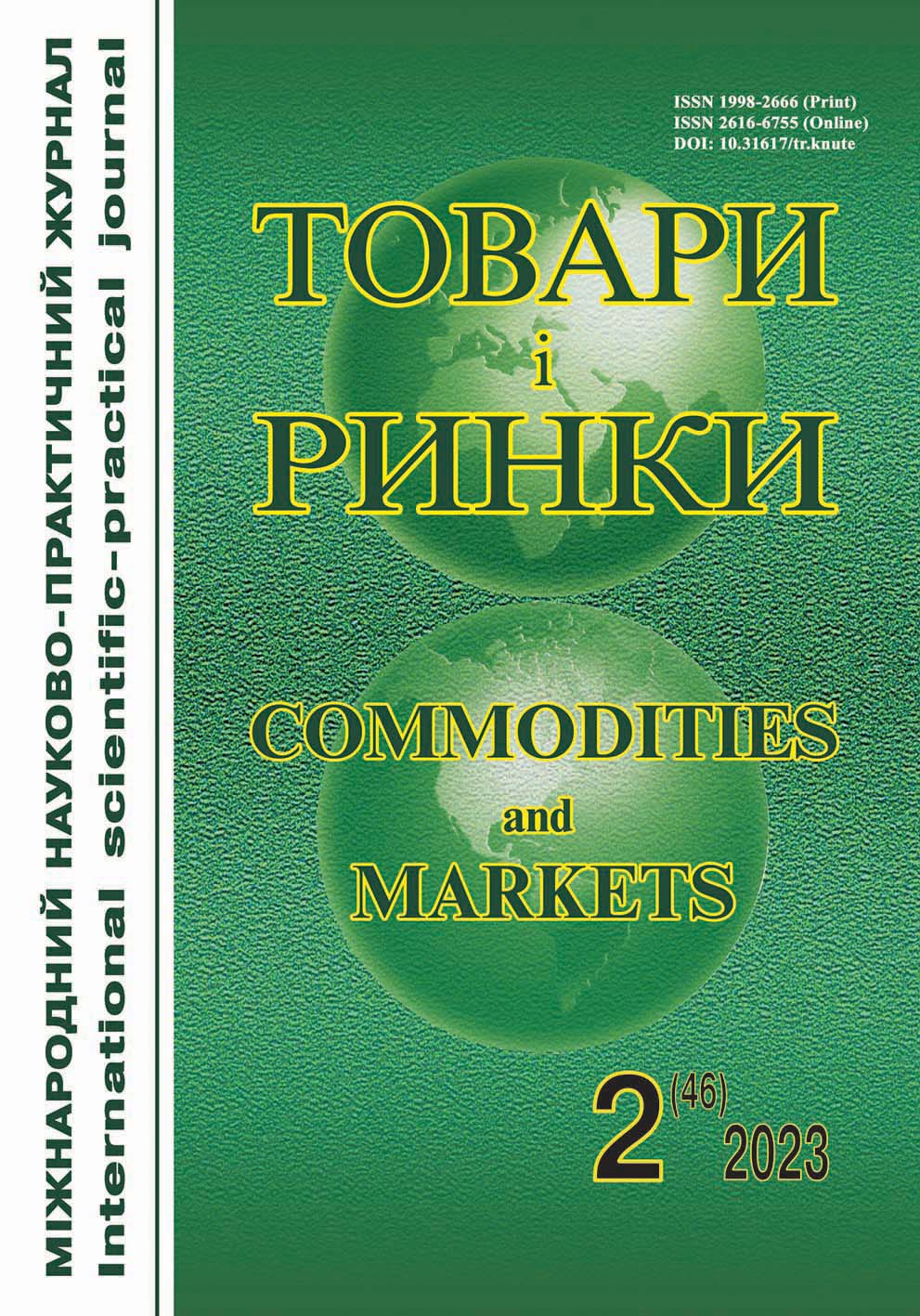Polymer-mineral finishing of leathers
DOI:
https://doi.org/10.31617/2.2023(46)09Keywords:
leather, polymer-mineral finish, quality, comprehensive index, consumer properties.Abstract
Introduction. Covering takes the main place in the list of natural leather manufacturing processes and provides the leather with high aesthetic, operational and hygienic properties. Modern requirements for leather products due to the annual change of fashion trends and design solutions require constant and rapid updating of their assortment.
Problem. Providing the required color or shade is the most difficult task for leather production, since the color range of existing pigment concentrates is quite limited, which is due to the chemical basis and the difficulty of their production.
Obtaining pigment concentrates on a mineral basis, modified montmorillonite, is a promising direction in the formation of the quality of natural leathers with a coating, and modern approaches to solving this problem is an urgent task.
The aim of the article is to improve the quality of leathers with a polymer-mineral finish in terms of physical, functional and hygienic indicators.
Methods. To calculate the complex indicator of the quality of leather with a polymer-mineral finish, the technique of selecting a limited number of indicators and evaluating their significance was used. A comprehensive assessment of the level of leather quality was carried out using expert and calculation methods.
Results. The experts ranked various groups of consumer properties of leather (physical, functional, hygienic) according to the importance of their contribution to the overall evaluation of the samples. Calculations indicate that the quality of the developed leathers is superior to the closest ones in terms of purpose and properties by 5.2–28.3 % according to the comprehensive quality indicator.
Conclusions. It has been established that the most important indicators for shoe upper leathers are adhesion of the coating to dry and wet leathers, resistance of the coating to repeated bending and to wet friction.
According to the results of expert assessment and own experimental studies, it has been proven that the comprehensive indicator of the quality of leather with a polymer-mineral finish exceeds the corresponding indicator of the basic analogue by 20.2 %.
References
Bondarjeva, A. O., & Mokrousova, O. R. (2019). Prospects of polymer-mineral decoration of natural leather. Collection of abstracts of reports of the 18th All-Ukrainian Scientific Conference of Young Scientists and Students "Scientific developments of youth at the modern stage". (pp. 409-410) [in Ukrainian].
Andrejeva, O. A., Garkavenko, S. S., Mokrousova, O. R., Nikonova, A. V., Ohmat, O. A., & Palamar, V. A. (2018). Assessment of environmental friendliness of natural leathers as materials of biogenic origin. Scientific search, 3, 64-73 [in Ukrainian].
Gryshhenko, I. M., Danylkovych, A. G., & Zvarych, I. T. (2018). Effective environmentally-oriented technologies for the production of fur and leather materials. Kyiv: World of Success [in Ukrainian].
Irjayanti, M., & Mulyono Azis, A. (2021). Quality management for leather industry to increase competitiveness in the global market. Business and Public Administration. (Vol. 12 (2), (pp. 16-30). https://doi.org/10.2478/hjbpa-2021-0012 [in English].
Made, B. (2017). Major Factors Affecting Hide and Skin Production, Quality and the Tanning Industry in Ethiopia. Advances in Biological Research. (Vol. 11 (3), (pp. 116-125). https://doi.org/10.5829/idosi.abr.2017.116.125 [in English].
Kas'jan, E. Je., & Kondratjuk, O. V. (2017). Properties of modified polymer compositions for leather decoration. Bulletin of the Khmelnytskyi National University. Series: Technical sciences, 5, 62-66 [in Ukrainian].
Bondarjeva, O. A., Mokrousova, & O. R., Kas'jan, E. Je. (2021). Modeling of quality indicators of leather finishing coating. Bulletin of the Khmelnytskyi National University. Series: Technical sciences, 4 (299), 115-123 [in Ukrainian].
Winter, C., Borges Agustini, C., Elizabeth, M., Schultz, R., & Gutterres, M. (2017). Influence of pigment addition on the properties of Polymer films for leather finishing. J. Soc. Leather. Technol. Chem. Vol. 101, 2, 78-85 [in English].
Ramkumar, S. C. et al. (2017). Polycarbodiimide and polyurethane cross-linkers for leather finishing. Revista de Pielarie Incaltaminte. Vol. 17, 4, 181-192 [in English].
Fan, Q., Ma, J., & Xu, Q. (2019). Insights into functional polymer-based organic-inorganic nanocomposites as leather finishes. Journal of Leather Science and Engineering. Vol. 1, 1, 1-10 [in English].
Lysenko, N., Omelchenko, N., & Martosenko, M. (2015). Assessing the quality of leather with hydrophobic coating. Eastern-European Journal of Enterprise Technologies. Vol. 3, 11 (75), 54-60. https://doi.org/10.15587/1729-4061.2015.43344 [in English].
Hljebnikova, N. B., Omel'chenko, N. V., & Danylkovych, A. G. (2015) Comprehensive assessment of the quality of fur velor from nutria skins. Bulletin of the Khmelnytskyi National University, 1, 249-255 [in Ukrainian].
Merezhko, N., & Tkachuk, V. (2020). Comprehensive assessment of the quality of motor fuels with biocomponents. International scientific and practical journal "Commodities and Markets", 4 (36), 57-64. https://doi.org/10.31617/tr.knute.2020(36)5 [in Ukrainian].
Leather for shoe uppers. Specifications. (1995). DSTU 2726–94. Kyiv: Derzhspozhyvstandard of Ukraine [in Ukrainian].




